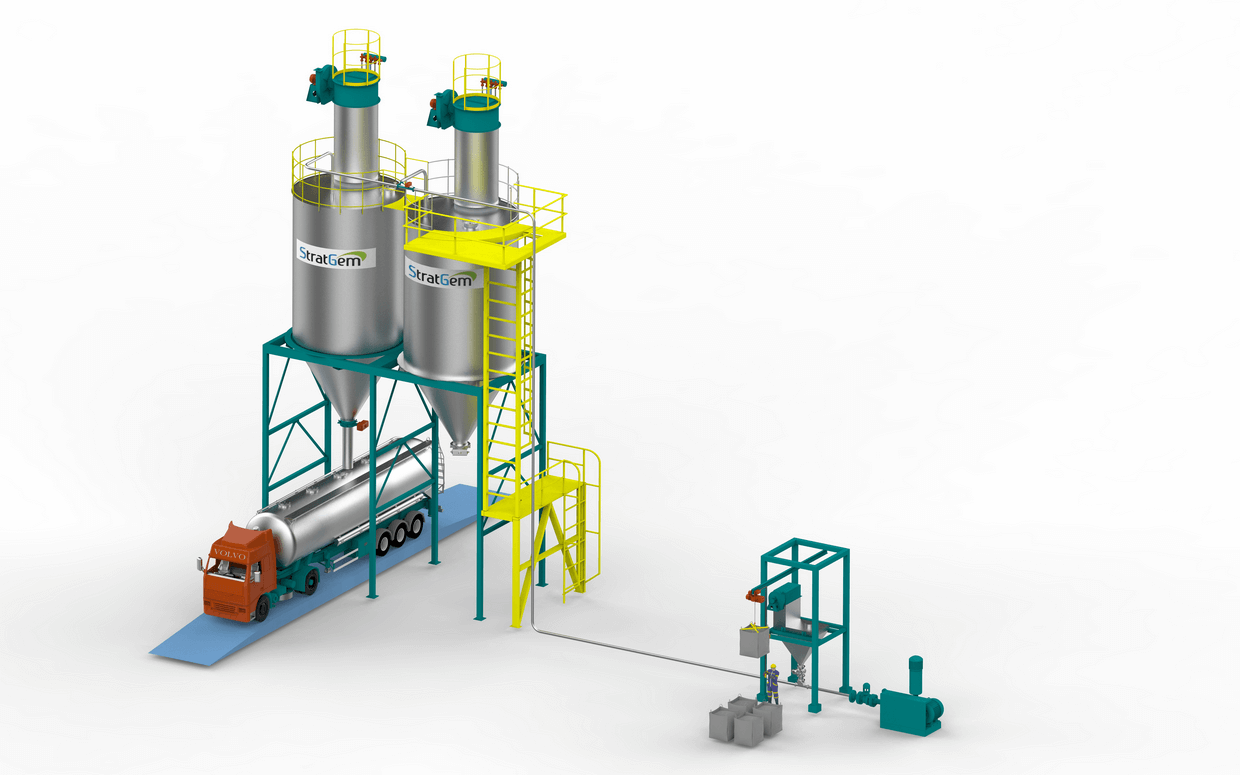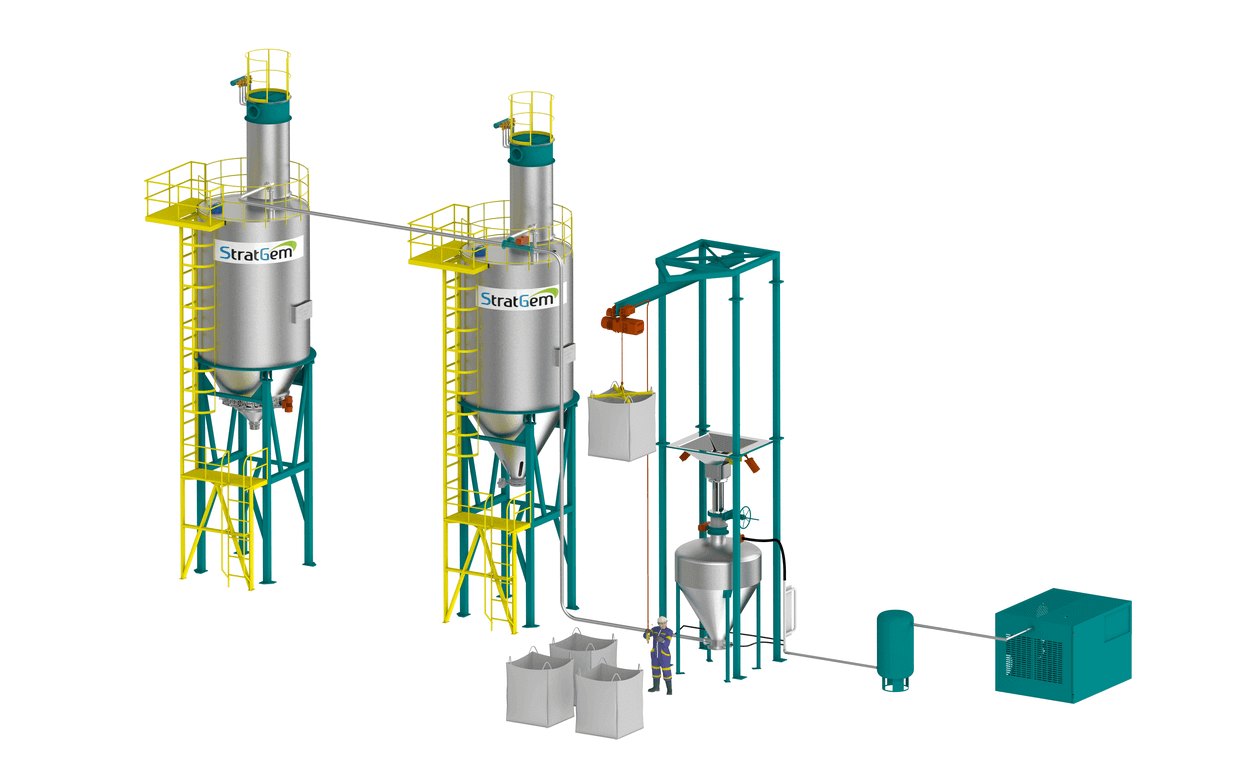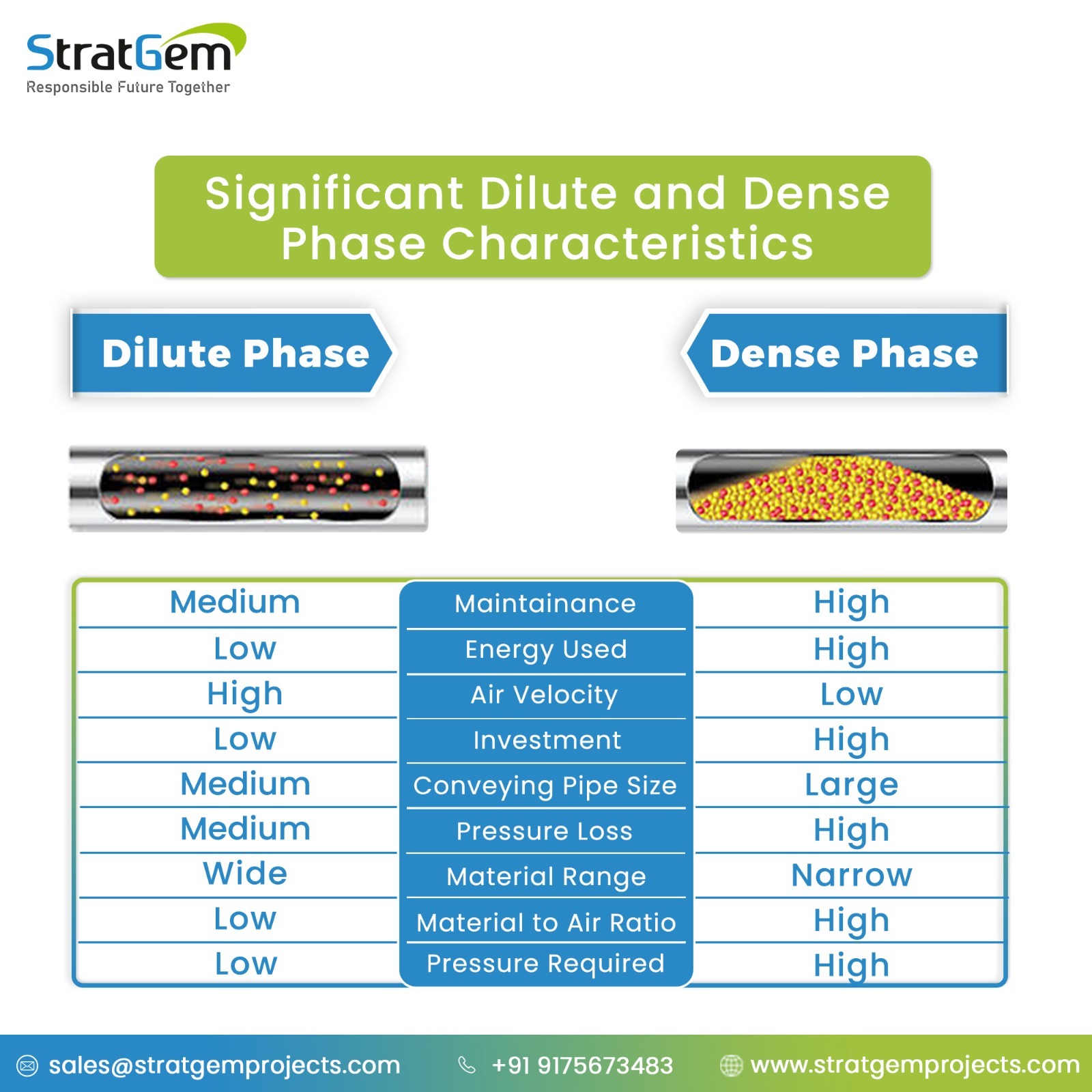
Dilute Phase Conveying System

Dense Phase Conveying System
Between the dilute and dense phases, which is preferable?
Everyone will have a doubt in their mind as to what choice they should make between the Dilute or Dense phase, even if the information is available online, but we always have some confusion because we miss some guiding principles. So we will give you a step-by-step approach to get the selective right system.
 Dense Phase Plug flow in pipe
Dense Phase Plug flow in pipe
 Dilute Phase Conveying Pipe (suspended flow)
Dilute Phase Conveying Pipe (suspended flow)
1) Difference between Dilute phase and Dense Phase
The Conveying system where the Solids to air ratio (μ=kgmaterial/kgair)is high ( < 15) is normally considered as dense phase mode of conveying . In this case the velocity is less than the saltation velocity . Due to above reason high conveying pressure with low air velocity is possible and suitable powders where the handling needs are for low breakage, fragile & abrasives, this system becomes ideal solution.
The flow pattern usually is in Plug flow or moving bed type depends upon each powder characteristics
Dilute phase on other hand , Characterized by a uniform distribution of the particles along all sections of the conveying line, with a suspension flow regime, i.e. transport velocity higher than the saltation velocity (minimum velocity to keep all material in suspension).
Dilute is classified into two categories: Dilute phase positive pressure conveying system and Dilute phase vacuum conveying system.
| Specification | Dilute Phase Pneumatic System | Dense Phase Pneumatic System |
|---|---|---|
| Conveying Distance | Up to 100 m | Up to 500 m |
| Conveying velocities | 15 m/s to 30 m/s | Up to 12 m/s |
| Air pressure | Below 1 bar | Above 1 bar |
| Air Volume | High | Low |
| Solids Loading Ratio | Up to 15 | Ranging from 20 to 80 |
| Conveying Capacities | Up to 15 TPH | Up to 80 TPH |
| Prime Mover | Roots Blower / Centrifugal Fans / Ring Channel Blowers | Compressor |

2) System Specifications
While selecting a system one should consider some parameters like their length of conveying system, conveying capacity, the velocity of the air and its conveying air volume, and conveying pressure.
The Above system configuration plays a very crucial role in choosing the Dense and Dilute phase. The data below should be considered as stated in table no.1
3) Material Properties
Material properties are the most important guidance as the type of conveying system depends on the material properties like particle size, density, fragile, toughness, abrasive, hardness, strength, fatigue etc. For the Dilute Phase pneumatic system materials that are free-flowing and non-abrasive are used.
And for Dense Phase Pneumatic System the materials best suited that are abrasive, heavier, fragile, and have the tendency to degrade.
| Material | Conveying System Required |
|---|---|
| Wheat flour | Dilute Phase |
| Chemical powders | Dense Phase/ Lean Phase |
| Alumina | Dense Phase |
| Fly ash | Dense Phase |
| Soda ash | Dilute Phase/ Lean Phase |
| Coffee beans | Dilute Phase |
| Minerals | Dense Phase |
| Sand | Dense Phase |
| Cereals | Dilute Phase |
| Zinc Dust | Dense Phase |
| PTA powder | Dense Phase |
| Grains | Dilute Phase |
| Sugar | Dilute Phase |
| Micro Silica | Dense Phase/ Lean Phase |
| Quartz | Dense Phase |
| Titanium Dioxide (TiO2) | Dense Phase/ Lean Phase |
| HDPE powders | Dilute Phase/ Lean Phase |
| Chocolate Powder | Dilute Phase/ Lean Phase |
| Coke | Dense Phase |
| Feldspar | Dense Phase |
| Lime | Dense Phase/ Lean Phase |
4) Energy Consumption:
Dilute Phase Pneumatic System consumes less energy.
Dense phase may not be as energy efficient as Lean or Dilute phase as the compressor is used to deliver air at 6 barg.
5) Which to Choose- Dilute Phase or Dense?
The Question arises which to choose among them- the answer depends on three things: material properties, conveying distance, and conveying capacity.
- For long distance conveying and high capacity material flow Dense phase are preferred
- For Short Distance and low-capacity powder transfer, dilute phase are preferred.
The Above points would be easy to distinguish whether to use dilute or dense phase and which one will be feasible for you
6) Let us see the advantages and disadvantages of a dilute and dense phase conveying system over each other.
Dilute Phase Conveying Advantages:
- Reduced Energy Consumption: Transporting the dilute phase typically requires less energy due to the lower pressure.
- Suitable for Soft & nonabrasive Materials: The dilute phase is often preferred for soft materials that can be damaged by higher pressures and denser packing during dense phase transport.
- Easy to operate and manage as the system requires less operating equipments & components
Dilute Phase Conveying Disadvantages:
- Limited distance: The transport of the dilution phase is generally suitable for shorter distances due to the lower material-to-air ratio and the resulting need for higher air velocities.
- Lower Conveying Efficiency: Compared to dense phase conveying, dilute phase conveying tends to have lower conveying efficiency, which means it may not be suitable for conveying large amounts of material quickly.
- Risk of Conveying Pipe Blockage: A lower fluid-to-air ratio can increase the pipe blockage risk if the material is not suitable for dilute phase pumping, or the system is not properly designed.
- Heat generation happens when used with roots blower and suitable cooling required for specific powders
Dense Phase Conveying Advantages:
- Greater Conveying Efficiency: Dense phase conveying allows larger amounts of material to be conveyed in each batch, making it more suitable for long-distance transportation or larger volume material hauling.
- Less Material Degradation: Because the material is transported at lower speeds and higher pressures, there is generally less material degradation and tearing during transport.
- Reduced Pipe Wear: A lower speed will result in less hose wear and possibly longer hose life.
- Longer Distance: Dense phase transport is better suited for longer distances due to the lower air velocities required.
- Heat Generation: heat during transportation is low, which can be a good solution to heat-sensitive materials.
Dense Phase Conveying Disadvantages:
- Higher Energy Consumption: Dense-phase transport generally requires more energy because it requires higher pressure and sometimes a larger volume of air.
- Restricted to brittle materials: Higher pressures and the possibility of closer packing can make dense phase transfer less suitable for very brittle materials.
- Complex System Design: Dense phase transport systems design can be more complex due to the need to balance pressure, flow and other factors to avoid pipeline clogging.
Stratgem develops and manufactures Dilute and Dense Phase pneumatic conveying systems based on the needs and specifications of the customer for the product.
Stratgem Pune, India offers comprehensive services such as field service, start-up service, full-scale material testing, and spare parts. Among the industries we serve are food, chemicals, pharmaceuticals, plastics, minerals, and others. To know more about the pneumatic conveying system please feel free to connect us!
